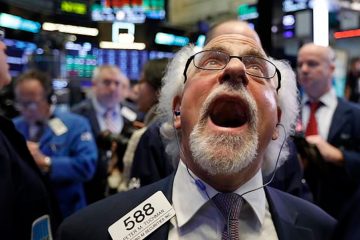U.S. stock market fall on Yen Carry Trade reversal

Nasdaq and S&P 500 both experienced a significant 3% decline as concerns over a potential US recession and a drop in Apple’s stock weighed heavily on the market. The U.S. stock market experienced significant declines on Monday, resulting in the Nasdaq and S&P 500 both dropping by at least 3%. This sell-off continued from last week, fueled by concerns about a potential U.S. recession. Additionally, Apple shares plummeted after news broke that a major investor had reduced its stake.
The three major indexes experienced significant declines over the past three days, marking their largest percentage drops since June 2022. Additionally, both the Nasdaq and S&P 500 closed at their lowest levels since early May. Global markets were rattled by recession fears, causing investors to flee from risky assets after the release of disappointing economic data, including the lackluster U.S. payrolls report on Friday. Investors are concerned about the economy losing momentum faster than expected, and they believe that the Federal Reserve made a mistake by not adjusting interest rates at its recent policy meeting.
Apple’s shares experienced a significant drop of 4.8% following Berkshire Hathaway’s decision to reduce its stake in the company by half. Billionaire investor Warren Buffett has allowed the cash at Berkshire to reach a staggering $277 billion. Nvidia, Microsoft, and Alphabet also experienced declines, while the Cboe Volatility index, known as Wall Street’s “fear gauge,” reached its highest closing level since Oct. 28, 2020. Declines in technology led to a drop in all 11 of the S&P 500 sectors.
Chicago Fed President Austan Goolsbee played down concerns of a recession, but emphasized the importance of Fed officials staying aware of shifts in the economic landscape to prevent excessive tightening of interest rates. “Today we’re witnessing a sell-off as a continuation of the apprehension experienced last week,” commented Neville Javeri, portfolio manager and head of the Empiric LT Equity team at Allspring in Washington. According to the speaker, the recent jobs data has prompted the belief that the Federal Reserve should take a more proactive approach in addressing the direction of unemployment numbers.
The Dow Jones Industrial Average experienced a significant decline of 1,033.99 points, representing a 2.6% decrease, closing at 38,703.27. Similarly, the S&P 500 saw a loss of 160.23 points, or 3.00%, ending at 5,186.33. The Nasdaq Composite also faced a notable drop of 576.08 points, equivalent to a 3.43% decrease, settling at 16,200.08. The S&P 500 experienced a significant decline, reaching its lowest point of the session at 5,119.26, with a decrease of over 4%. Indexes recovered from earlier losses as new data revealed a positive upswing in U.S. services sector activity for July. This improvement was driven by an increase in orders and employment, signaling a potential turnaround.
The underwhelming jobs report and declining manufacturing activity in the world’s largest economy have only intensified concerns, coming on the heels of disappointing forecasts from major U.S. technology companies.
On Friday, the Nasdaq Composite officially entered into correction territory. Traders are currently factoring in a high probability of the Fed implementing a significant rate cut at its upcoming policy meeting in September. The CME Group’s FedWatch Tool indicates an 86% chance of a 50 basis-point reduction and a 14% chance of a 25 basis-point reduction.
The sell-off has primarily targeted the group of stocks known as the Magnificent Seven, which had previously driven the indexes to new highs earlier this year. Traders also pointed out that the decline in stocks was partly due to the unwinding of carry trades. This strategy involves borrowing money from countries with low interest rates, like Japan or Switzerland, to invest in higher-yielding assets in other places.
There were significantly more declining issues than advancing ones on the NYSE, with a ratio of 9.04-to-1. Similarly, on Nasdaq, decliners were favored with a ratio of 6.44-to-1.
The S&P 500 saw 16 new 52-week highs and 26 new lows, while the Nasdaq Composite experienced 14 new highs and 508 new lows.










